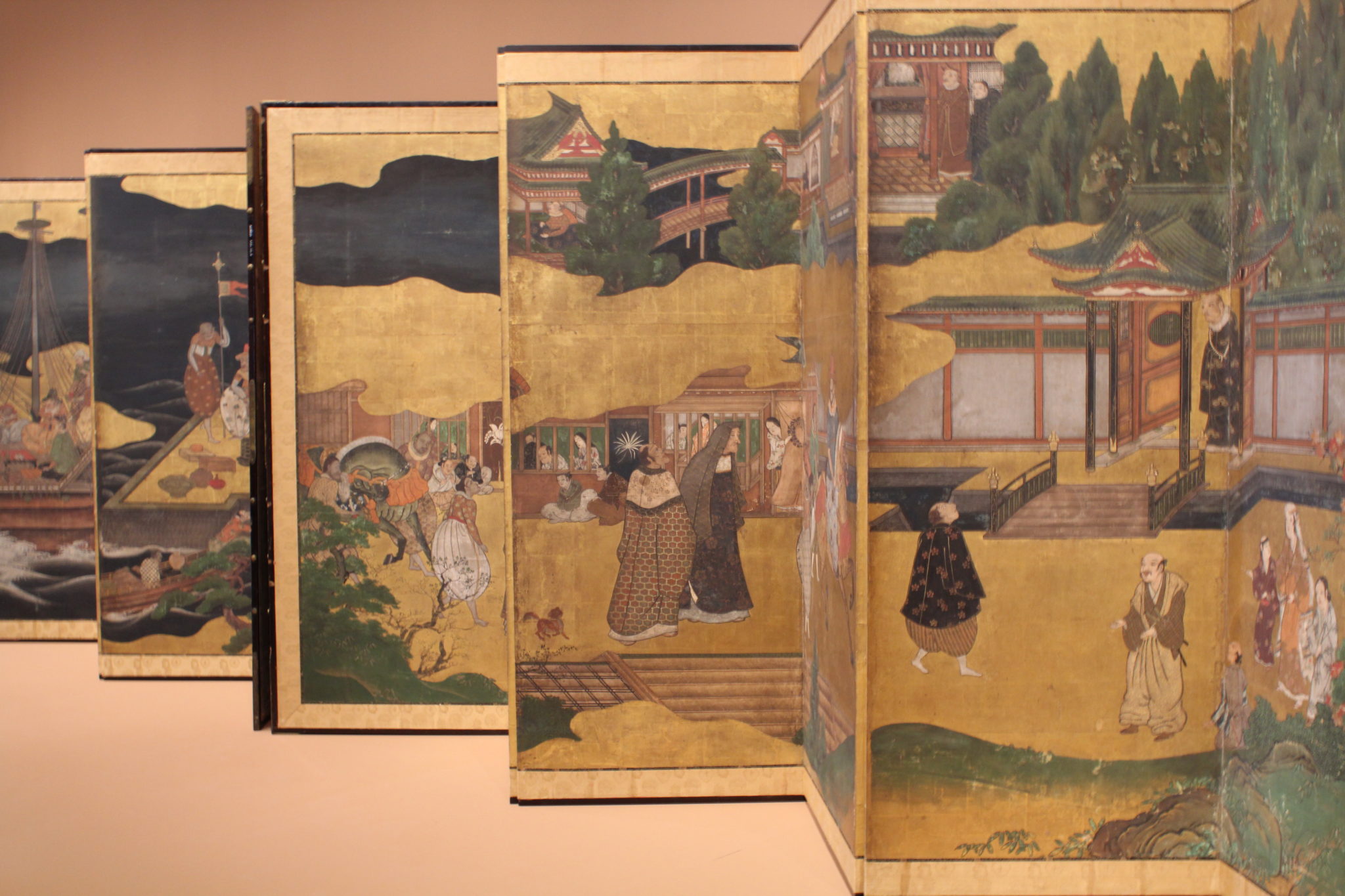
I think it’s fair to say that most of us don’t know much about the Japanese Baroque Period from 1550 to 1650. I, for one, knew embarrassingly little. That is, until I visited the special exhibit at the Yale University Art Gallery. Seemingly made to inform me specifically of the art of this niche period of history, the exhibition “Japan’s Global Baroque, 1550–1650” resides in not another white-washed gallery room of the YUAG. Sitting in a room with dark, rust-colored walls high above the Van Goghs and Rubens and Pollocks, this temporary exhibit feels different that a regular art museum tour, and rightfully so. For this gallery is an exposition far more about history than about any work of art.
Maybe the world “global” in the formal title of this show should have been the giveaway, but I was not prepared to find an exhibition room filled with pottery from China and a triptych of Mary and Jesus from a Neapolitan painter. I was expecting traditional, national art from Japan. And that is not what I found. At first, I could not understand. Was I in the wrong place? Definitely not. So, I began to read the description plaques adjacent to these international works. These centuries in Japan were defined by trade of textiles, porcelains and lacquers. The art, then, began to reflect this culture of exchange and luxury. And what was once a trip to the art gallery quickly became a history lesson.
This single-room exhibit is filled mostly with glass cases rather than paintings or free-standing sculptures. On one of the short walls you will find three cases, each filled with a small, intricate wooden cabinet. With bone and gold and bronze inlaid, these pieces are based on European writing desks. Already I began to notice some kind of foreign influence. The technique seen on these wooden exteriors — of sprinkling gold onto lacquered surfaces — increased the trade value of such works. Most importantly, though, it began to define a Japanese aesthetic in Europe which would last over three centuries.
Turning to the right, two of the mounted glass cases are filled with explicit Christian symbolism. The “Portable shrine with Madonna and Child” came out of a Jesuit painting school in Japan. It seemed to have no place in a traditional Japanese culture. It belonged downstairs, hanging alongside its counterparts of this revered scene. But this Madonna painting sat not in a heavy, engraved metal frame, but rather, in a lacquered shrine made by Japanese artists. It is a painting that is just as much about the integration of cultures as it is about the scene of Madonna and Jesus. The other glass case contains a small sculpture of Mary, overwritten with Chinese characters. The description makes the multiculturalism of these works clear: This piece is a display of “iconography that was popular in Europe in the 17th and 18th centuries.”
Nearby, another case features a collection of white porcelain dishes with intricate, more traditional blue paintings. Of the dishes on display, the majority are from China, not Japan. “Was there something I was missing?” I wondered. I thought the exhibit was supposed to be about the Japanese Baroque period — but I realized that these dishes and pots were commissioned for Japanese tea ceremonies. Made by Chinese potters out of Chinese porcelain, they were an order for export. Slowly, the comprehensive guide of Japanese culture — in wealth, tradition, ritual and art — that this exhibit works to divulge became clear.
This is not to say that the exhibit was simply a kind of worldly, diverse group of art that variously related to Japanese culture at the given time. Two mirroring works — one, a selection of tapestries, another, a set of massive, folded paper screens — are done by Japanese artists in their native homeland. The tapestries are woven with silk and velvet and threaded with metal. They portray flowery designs and scenes of hunting. In a long street scene, this piece, painted with color as well as gold leaf, illustrates the arrival of Europeans in Japan. Drawing on the strong ties between European merchants and the religious orders that travelled with them, these screens serve as commentary on attitude and history, colonization and imposition. Done in the style of the native land but still engaging with the other global themes of this thoughtful collection, these screens allow the exhibition to be seen as the interconnected, cross-cultural history of Japan from 1550 to 1650.
Shayna Elliot | shayna.elliot@yale.edu







